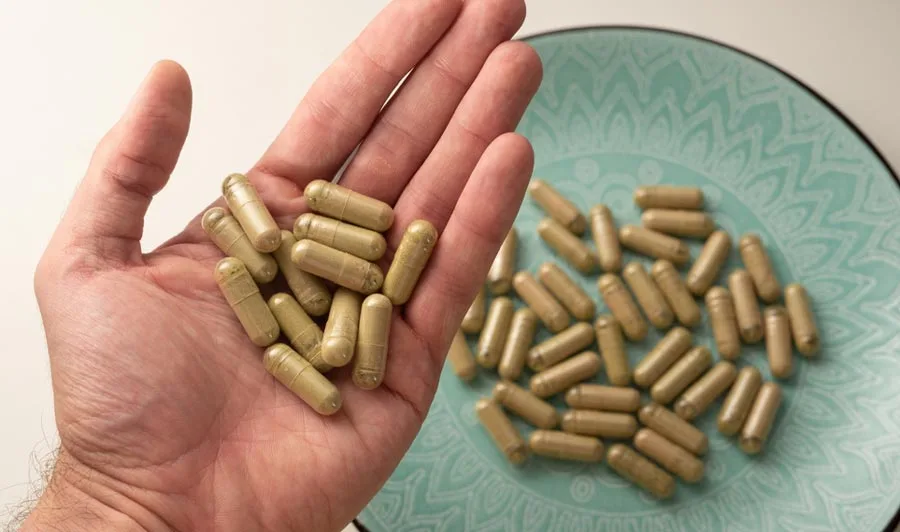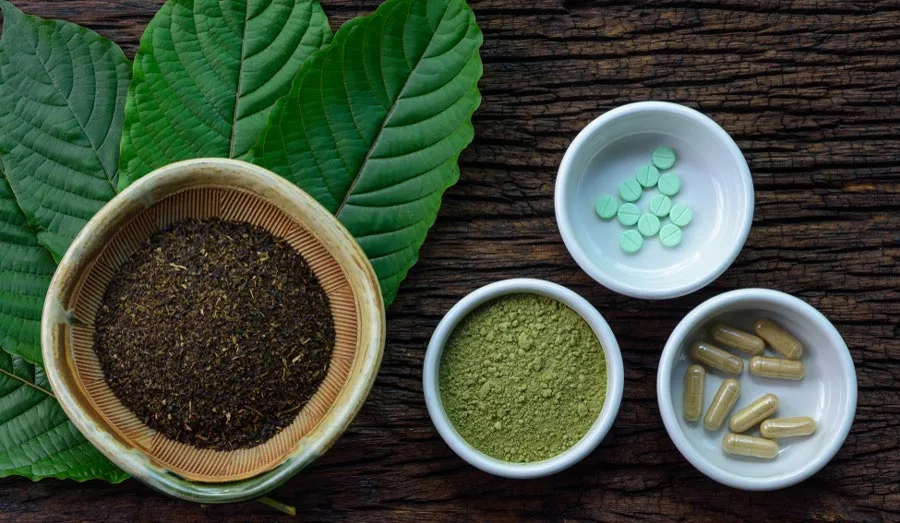Effective Treatment for Kratom Dependence
Derived from a tree in the coffee family, kratom is native to Southeast Asia. Also known as the Mitragyna speciosa, kratom is often cultivated in Malaysia, Indonesia, and Thailand. The dried leaves are usually used to brew tea or put into capsules and sold as a nutritional supplement. Some people also smoke kratom, like tobacco. Those using kratom daily in large doses can find themselves in need of kratom rehab services.
This is because long-term kratom use can cause severe adverse effects. Kratom addiction can have devastating effects on your overall well-being. At Exclusive Hawaii Rehab, we offer a wide range of substance use disorder (SUD) treatment options to match your needs.
Keep reading to learn more about our Kratom rehab programs and get help now!
What Are the Effects of Kratom?


Not much is known about kratom’s health effects. There is no scientific evidence that any application of kratom is either safe or effective. Below are some of the health effects of kratom:
Pain Relief
By binding to opioid receptors, kratom may be an effective treatment for persistent pain. Kratom contains a chemical called 7-hydroxy mitragynine, which is 13 times more potent than morphine.
Although it acts on the same opioid receptors as morphine and codeine, kratom is classified as an atypical opioid due to its structural differences. Although it may have milder adverse effects than conventional opioids, the Food and Drug Administration has not yet certified kratom for medicinal use.
Boosted Mood
Kratom often has mood-enhancing effects. There’s preliminary evidence that kratom can help those with opioid addiction. Users report that it helps them cope with the discomfort of morphine and alcohol detox.
Early research indicates that kratom shows promise as an antidepressant and appetite suppressor. Kratom can help reduce corticosterone levels.
Experience True Healing
Our deeply-caring staff and the surrounding natural beauty offer an unparalleled healing experience.
Stimulant Effects
According to the European Monitoring Center for Drugs and Drug Addiction (EMCDDA), just a few grams of kratom can produce stimulant effects. Stimulating strains and dosages of kratom might make you feel more active and alert and even elevate your heart rate.
The effects often occur within a few minutes after using the drug and may last up to 1 1/2 hours.
Sedative Effects
Kratom can also have sedative effects, especially when taken in large doses. Kratom can make you feel more relaxed or confused, depending on the strain and dosage.
What are Kratom’s Side Effects?
The effects of kratom vary with dosage. Kratom has stimulating effects at low doses. It has analgesic and sedative properties in large quantities, with analgesic and sleep-inducing effects.
Below are some of the more specific side effects of kratom.
- Mood changes like calmness and euphoria
- Behavioral changes such as increased social behavior
- Physical effects like increased libido, sweating, and nausea
- Psychological effects such as boosted motivation, awareness, and psychosis
Kratom Rehab: Overcoming Addiction and Dependence


While “dependence” and “addiction” are often used interchangeably, they are two different conditions.
Drug dependence is a physical state when your body is dependent on a drug. It is often accompanied by increased tolerance, requiring more substance to induce the same effect. If you suddenly stop using the medicine, you may experience damaging psychological and physiological signs, known as withdrawal.
When someone is addicted to a substance, they continue to use it despite the apparent risks. However, physical dependence on the drug is a common aspect of addiction, and it can happen without addiction.
What Are the Causes of Kratom Addiction?
Multiple factors contribute to the onset of addiction. Some elements are environmental, such as having acquaintances who use drugs. Other causes of addiction are genetics. The possibility of becoming addicted to drugs after using them increases in those with specific genetic makeups.
Consistent drug use alters brain chemistry, affecting your capacity to enjoy pleasurable experiences. Because of this, it may be challenging to quit using the drug after you’ve started suddenly.
What are the Signs of Kratom Addiction?
It would be best if you met some specific diagnostic criteria before a medical practitioner can diagnose you with a substance use disorder. SUDs are characterized by persistent, compulsive substance use despite adverse consequences.
These requirements are laid out in the Diagnostic and Statistical Manual of Mental Disorders, Fifth Edition (DSM-5), issued by the American Psychiatric Association. They include
- Being unable to regulate the amount or frequency of kratom used
- Inability to stop using kratom despite failed repeated efforts
- Neglecting relationships and responsibility
- Losing enthusiasm for past interests and pursuits in life
- Reduced performance at home, school, or work
- Continuing to use drugs despite knowing the adverse effects they cause
- Engaging in risky behavior
- Increased drug tolerance, which caused you to need increasingly larger doses of a drug to have the same effects as before
- Experiencing unpleasant physical and mental withdrawal effects when use is suddenly stopped
If you have experienced some of the signs above in the past year, you may have an addiction problem. Call us today for professional advice on kratom addiction treatment.
Kratom Withdrawal Signs and Timeline


Like highly addictive substances like heroin and prescription painkillers, kratom contains chemical components that bind to and activate opioid receptors in the brain. Some kratom users have reported getting addicted to the drug.
Kratom has the potential to induce physical dependence, just like opioids. People who have been abusing kratom regularly and have become dependent on it may experience withdrawal if they suddenly stop taking the substance.
Below is an overview of the kratom and opioid withdrawal symptoms.
The Come Down from Kratom
This phase usually lasts about 6 hours to 12 hours after the last use. The euphoria and calmness that kratom provides are short-lived, and users often report experiencing anxiety or depression after coming down from their high.
The first obstacle in breaking a habit is resisting the temptation to seek out that high again. Kratom addiction is often a vicious cycle. People who try quitting the drug feel like they need to take more of the drug to stave off the withdrawal symptoms.
This usually leads to tolerance and increases the need to take the drug more frequently to achieve the same effect. During the beginning withdrawal process, you must realize that it is possible to experience pleasure without the drug and that the risk of overdose is not worth the short-term benefits.
Initial Withdrawal Symptoms Between Days 2 and 3
The first withdrawal symptoms usually appear within 12 hours of the user’s last dose. Some most common signs and symptoms include:
- Muscle pain and discomfort
- Anxiety, irritability, and sleeplessness
- Excessive perspiration, runny nose, and watery eyes
- A feeling of restlessness and unease
Intense cravings to resume kratom use to alleviate general discomfort are common during this detox phase. Electrolyte deficiency is a potential side effect of kratom withdrawal due to nausea, vomiting, and diarrhea.
Experience True Healing
Our deeply-caring staff and the surrounding natural beauty offer an unparalleled healing experience.
Peak Withdrawal Symptoms from Days 3 to 5
The most severe withdrawal symptoms can be uncomfortable and last from a few days to a week. Nausea and stomach pain are the most common symptoms and often lead to vomiting and diarrhea.
Help from a medical professional is essential during this phase of a kratom detox to ease the discomfort. Maintaining motivation and preventing relapse is easier when supportive people surround you.
Late Withdrawal Signs from Days 5 to 6
The worst of the symptoms should begin to subside after a few days. But some mild ones may linger for longer. These secondary symptoms can persist for an additional week or two after the main ones have subsided, depending on factors like drug use frequency and the individual’s biochemistry.
Ongoing Support from Our Kratom Rehab Program


While the most severe kratom withdrawal symptoms are manageable and go away fast, the less severe ones can linger for months or even years. These include:
- Anxiety
- Depression
- Mood swings
- Fatigue
- Insomnia
- Physical signs
- Intense cravings to resume drug use
This is the time to see a doctor, as these symptoms tend to last a while. Getting help from a specialist is essential to cope with these persistent withdrawal symptoms and avoid recurrence.
A person’s tolerance to kratom will decrease during the withdrawal phase. Overdoses frequently occur when people who have stopped using the drug try to use it again to relieve their symptoms. Since they can no longer tolerate the doses they were previously able to, it is vital to seek expert assistance to maintain abstinence.
Why Self-Detoxification Is Dangerous
People who attempt drug detox on their own are at significant risk of:
- Relapse: Tolerating the discomfort of kratom withdrawal significantly contributes to relapse. Whenever physical discomfort returns, the person in recovery is often compelled to get more drugs.
- Electrolyte imbalance: An electrolyte imbalance might occur if the person experiences severe diarrhea and vomiting during withdrawal. When this happens, the body loses water and electrolytes, which can lead to hyperkalemia and other complications if not treated.
Like other addictions, the discomfort of kratom withdrawal can increase your risk of relapse. The medical staff assisting with kratom detox will be able to alleviate any pain or discomfort you may be experiencing.
Kratom Addiction Treatment and Rehab


Kratom dependence and addiction remain significant health problems since no approved medical therapies are currently available.
Physical stabilization, therapy, and recovery are the typical stages of drug abuse and addiction treatment. One of the first steps toward a safe and comfortable withdrawal is to undergo medically supervised detox, which may include the use of detox drugs. After detox, you’ll be ready for the next steps in treatment, which often involve behavioral therapy and medicines.
Your individual requirements should inform a thorough treatment strategy.
The following elements may be incorporated to enable long-term recovery:
- Medical detox: Medical professionals care for clients as they withdraw from drugs. This enhances medical stability, which is necessary for continued treatment.
- Inpatient rehab: This entails living at the rehabilitation center while receiving therapy. You will be provided with therapeutic services for treating kratom addiction around the clock.
- Outpatient rehab: Rehab clients who choose outpatient care can live at home while still receiving treatment. They receive therapeutic and rehabilitative services.
- Aftercare services: Aftercare allows you to remain clean and avoid relapse after formal treatment has ended. Individual therapy, sober living homes, joining a mutual-support group, like Narcotics Anonymous, using telehealth services, and maintaining a pharmaceutical regimen are examples of aftercare approaches. People in drug abuse and addiction recovery frequently take medication to aid in their process. If you’re having trouble staying sober, medication-assisted treatment (MAT) may be able to help.
Some of the therapies used to treat opioid use disorder include:
- Contingency management (CM): Positive reinforcement and other concepts of contingency management involve rewarding positive behaviors, such as passing drug tests, with material goods.
- 12-step facilitation therapy: Motivating people to join 12-step groups like NA is the goal of 12-step facilitation treatment.
- Motivational therapies: The motivation to take your medication as prescribed might be improved with the help of motivational therapy.
- Cognitive-behavioral therapy (CBT): The use of drugs is avoided through the use of cognitive-behavioral therapy, which teaches you new ways of thinking, acting, and coping. Through this program, you gain knowledge and tools to help you maintain sobriety and resist temptation.
Get the Help You Deserve for Kratom Now
While many drug rehab programs focus on eliminating drugs from the system, we understand that addiction is a complex condition that requires a holistic approach. We will help you discover and resolve your kratom addiction’s underlying causes.
Call our warm and compassionate Intake Coordination team today or reach us through our online contact form for professional medical advice on mental illness and kratom addiction treatment plans at Exclusive Hawaii Rehab.
Experience True Healing
Our deeply-caring staff and the surrounding natural beauty offer an unparalleled healing experience.
Kratom Rehab FAQs
Below are some of the most frequently asked questions about kratom rehab:
Is Kratom Addictive?
Kratom is structurally similar to the highly addictive substances heroin and opiate-based medications. Its chemical constituents bind to and activate opioid receptors in the brain.
Some users have reported needing to use the medication constantly after trying it once. There is some evidence that kratom, like opioids, can lead to physical dependence. Those who have been abusing kratom regularly and have become dependent on it may experience withdrawal if they suddenly quit.
How Is Kratom Abused?


Kratom is most commonly taken as a pill, capsule, or extract and abused orally. The kratom leaf can be chewed, smoked, or vaporized, and it can also be dried and taken as tea.
What Are the Benefits of Kratom Detox?
Kratom detox has many advantages:
- You can be done with the detox process in 7–10 days
- Medications are prescribed specifically for you to help you control your urges, stay comfortable, and prevent relapse
- Collaborate with kind, compassionate experts that recognize your pain and will lead you through the procedure without any problems.
Is it Safe to Combine Kratom with Suboxone?
No, never mix kratom with Suboxone. Acute withdrawal symptoms can occur if a person using Suboxone has recently used opioids or kratom.
Is Kratom Legal?
Although kratom is not on the list of substances subject to federal regulation, its possession, and use may be illegal under state law. The FDA has approved no medical application for kratom. Kratom is also on the Drug Enforcement Administration’s (DEA’s) “Drugs and Chemicals of Concern” list.
Does Insurance Cover Kratom Rehab?
Whether or not your insurance will cover kratom for addiction treatment depends on your specific policy. Many clients do not have to worry about paying for medical care entirely because insurance will cover some or all of the bills.
Call us to find out if your insurance covers kratom addiction treatment and rehab. You can call one of our Intake Coordinators to confidentially verify your insurance coverage now!